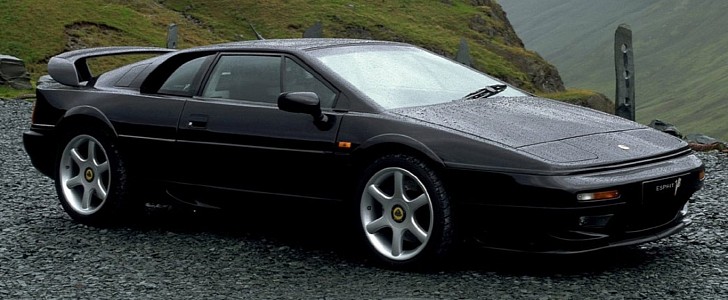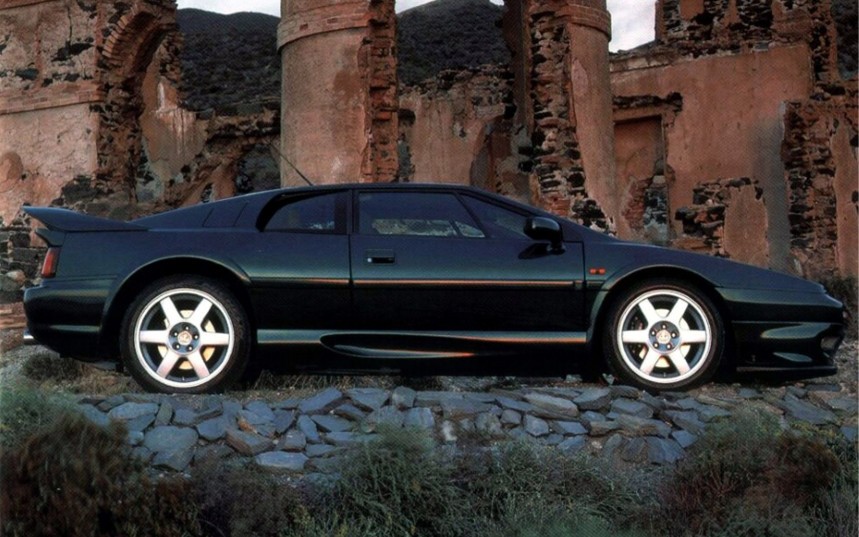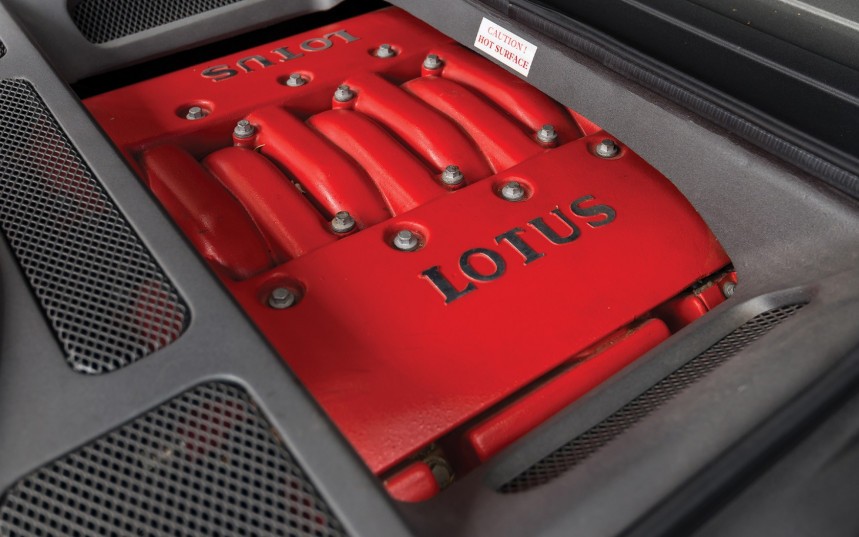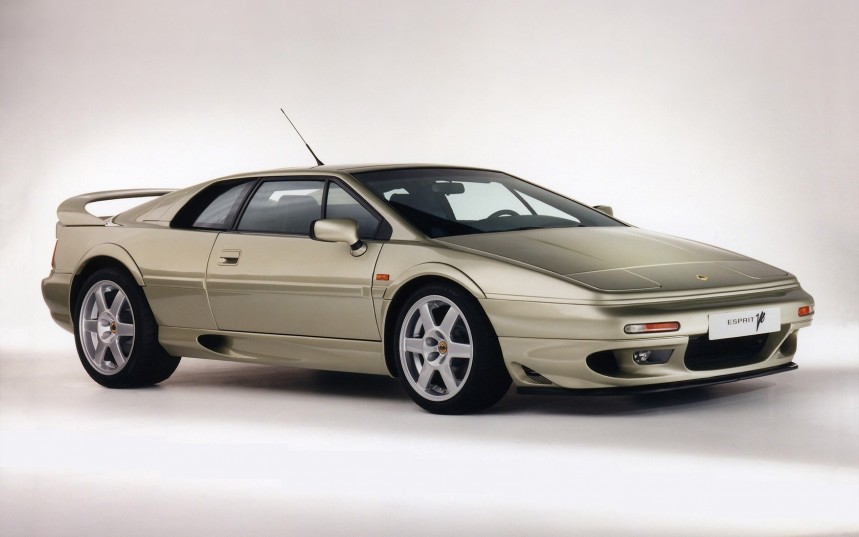21 years since Lotus unveiled the first Esprit, the iconic British sports car finally got the V8 it deserved in 1996. The upgrade gave it a huge increase in performance, turning it into one of the most sought-after thrill machines of the decade, despite its imperfections.
The origins of the Esprit date back to 1970 when the late Tony Rudd proposed two new model development projects. One of them was codenamed Project M70 and was meant to develop a successor to the Europa.
Designer Oliver Winterbottom arranged a meeting between Lotus boss Colin Chapman and famed designer Giorgetto Giugiaro in 1971, suggesting that the Italian should use his Maserati Boomerang concept as the inspiration for the new mid-engine Lotus sports car.
Development began later that year, and after four years of prototyping, the first-generation Esprit was launched in October 1975 at the Paris Motor Show.
Fast forward to the 1990s, and the car was already a star. It featured in two James Bond movies, with the X180 Esprit also debuting on the big screen in the 1990 American romantic comedy Pretty Woman.
In 1993, it got a well-deserved refresh at the hands of designer Julian Thomson, and this led to the fourth generation, known as Series 4.
The final generation was arguably one of the most beautiful sports cars out there, rivaling the Ferraris and Lamborghinis of the era; however, its aging 2.2-liter four-cylinder just didn’t sound right.
Sure, it offered plenty of power and was boosted by a huge turbocharger, but on cold starts, the engine shook and clanked like it was about to blow. Moreover, at high revs, it often sounded tired and wiry, which was a shame since the car handled amazingly, holding on to the road perfectly in true Lotus fashion.
Three years and $7.5 million in development costs later, the car finally got the engine it deserved, an all-new V8 conceived in-house by Lotus Engineering, the pioneering team responsible for the creation of the fourth-generation Corvette ZR1’s LT5 V8 unit.
The result was a 3.5-liter all-aluminum 90-degree V8 with a flat-plane crankshaft and two Garrett T25/60 turbochargers. It had the potential to reach 500-hp (373 kW) territory, but due to the limits of the Renault-sourced five-speed manual, it was detuned to 350 hp (261 kW).
Still, that was enough to propel the stunning Lotus to 60 mph (96 kph) from a standstill in 4.4 seconds, which was quicker than what the contemporary Ferrari F355 could achieve.
Weighing less than 485 lbs (220 kg) complete with all the auxiliaries, the compact engine transformed the Esprit V8 into a refined and responsive supercar.
It could have been the best out there by a long shot if it weren’t for the sluggish gearbox. Although it received a much thicker single piece input shaft thanks to Lotus racing driver Derek Bell's feedback, its slow and unwieldy shifts would often ruin the driving experience.
Still, perfection is hard to achieve, especially in the automotive world, and despite its flaws, the Esprit V8 will forever be remembered as one of the most iconic yet underrated vehicles of the 90s.
In recent times, the car made an appearance on Top Gear’s Patagonia Special, where it was driven by James May and performed incredibly well in absolutely insane conditions, much to the amazement of everyone.
The Esprit V8 was produced in a run of 1,237 units from 1996 to 2004. Today, surviving specimens in pristine condition are sold for around $60,000.
Designer Oliver Winterbottom arranged a meeting between Lotus boss Colin Chapman and famed designer Giorgetto Giugiaro in 1971, suggesting that the Italian should use his Maserati Boomerang concept as the inspiration for the new mid-engine Lotus sports car.
Development began later that year, and after four years of prototyping, the first-generation Esprit was launched in October 1975 at the Paris Motor Show.
Fast forward to the 1990s, and the car was already a star. It featured in two James Bond movies, with the X180 Esprit also debuting on the big screen in the 1990 American romantic comedy Pretty Woman.
The final generation was arguably one of the most beautiful sports cars out there, rivaling the Ferraris and Lamborghinis of the era; however, its aging 2.2-liter four-cylinder just didn’t sound right.
Sure, it offered plenty of power and was boosted by a huge turbocharger, but on cold starts, the engine shook and clanked like it was about to blow. Moreover, at high revs, it often sounded tired and wiry, which was a shame since the car handled amazingly, holding on to the road perfectly in true Lotus fashion.
Three years and $7.5 million in development costs later, the car finally got the engine it deserved, an all-new V8 conceived in-house by Lotus Engineering, the pioneering team responsible for the creation of the fourth-generation Corvette ZR1’s LT5 V8 unit.
Still, that was enough to propel the stunning Lotus to 60 mph (96 kph) from a standstill in 4.4 seconds, which was quicker than what the contemporary Ferrari F355 could achieve.
Weighing less than 485 lbs (220 kg) complete with all the auxiliaries, the compact engine transformed the Esprit V8 into a refined and responsive supercar.
Still, perfection is hard to achieve, especially in the automotive world, and despite its flaws, the Esprit V8 will forever be remembered as one of the most iconic yet underrated vehicles of the 90s.
In recent times, the car made an appearance on Top Gear’s Patagonia Special, where it was driven by James May and performed incredibly well in absolutely insane conditions, much to the amazement of everyone.
The Esprit V8 was produced in a run of 1,237 units from 1996 to 2004. Today, surviving specimens in pristine condition are sold for around $60,000.




